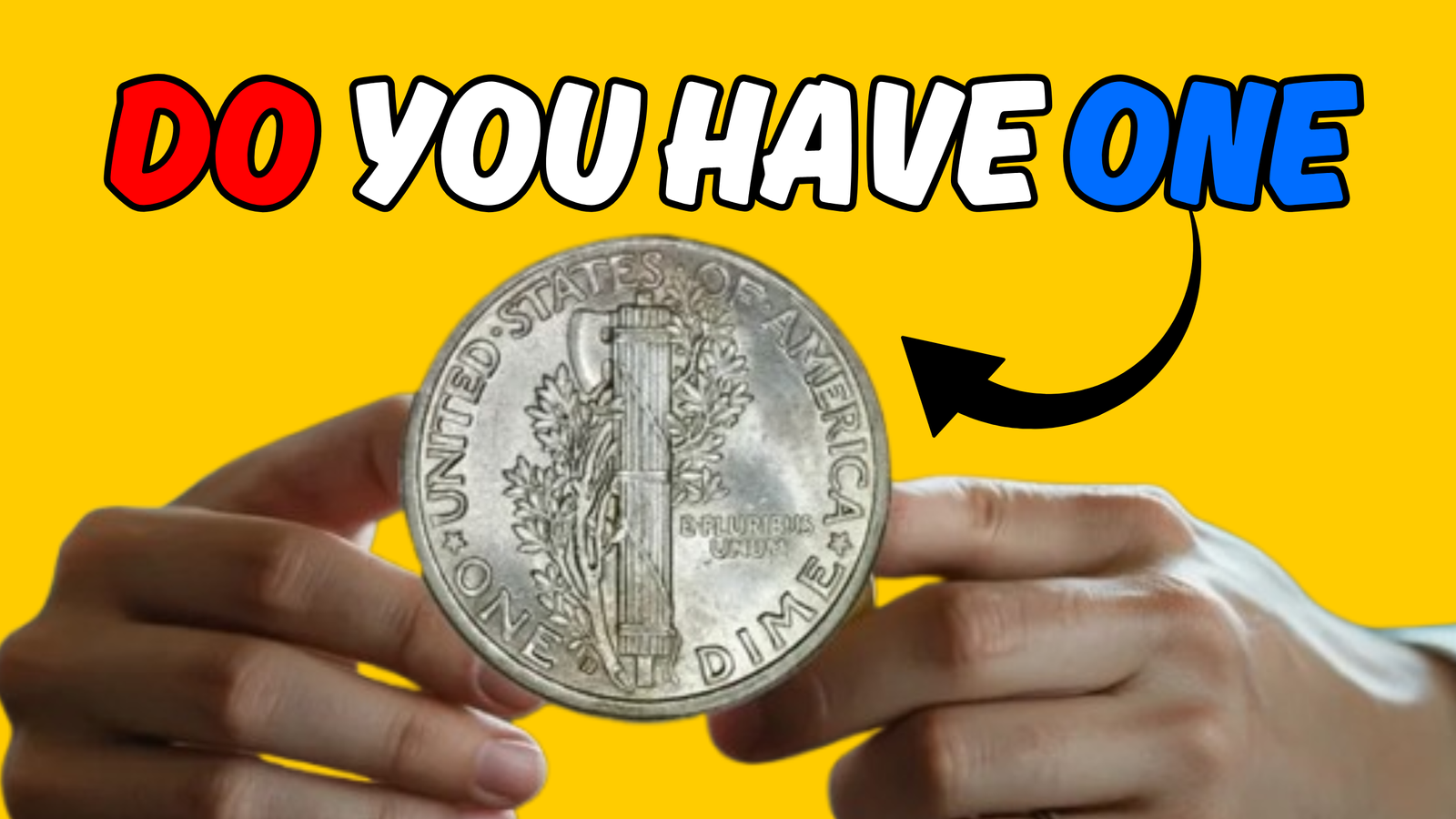Mercury Dime : In a world where garage sales and forgotten attic boxes occasionally produce jaw-dropping discoveries, one of the most exciting modern treasure hunts is quietly taking place in junk drawers, old coffee cans, and dusty piggy banks: the search for rare coins. And among them, few are as legendary—or as valuable—as the elusive 1916-D Mercury dime.
The $975,000 Dime: A Tiny Fortune in Your Hands
Imagine casually sifting through your old coin collection, only to uncover a small silver dime with the date 1916 and a tiny “D” mintmark on the back. At first glance, it looks like any other Mercury dime—a 90% silver coin featuring the winged Liberty head design that circulated widely through much of the 20th century. But this particular coin, minted in Denver in 1916, is one of the rarest in U.S. history.
In pristine condition, the 1916-D Mercury dime has fetched prices as high as $975,000 at auction. That’s nearly a million dollars for a single 10-cent piece.
What Makes the 1916-D So Valuable?
There are three key ingredients that give this tiny coin its enormous value:
- Low Mintage: Only 264,000 of these dimes were produced at the Denver Mint—compared to over 22 million at the Philadelphia Mint the same year.
- High Demand: Mercury dimes are a favorite among collectors. Completing a full set is a major goal for many, and the 1916-D is the crown jewel of the series.
- Condition Is King: Most surviving 1916-Ds were well-worn from circulation. High-grade, uncirculated examples are exceedingly rare, and it’s those that command six-figure (or higher) price tags.
Could One Be Hiding in Your House?
The idea might sound far-fetched, but stranger things have happened. Over the years, dozens of rare coins have surfaced in inherited collections, flea market finds, or even inside old coffee cans used as makeshift banks. If your grandparents or great-grandparents collected coins—or simply threw their spare change into a jar—you could be sitting on a small fortune without knowing it.
How to Spot a Real 1916-D Mercury Dime
If you want to check your stash, here’s what to look for:
- Date: It must say 1916 on the obverse (front) of the coin.
- Mintmark: Flip the coin over. On the reverse, near the bottom left next to the E in “ONE,” look for a small “D” mintmark. No mintmark means it’s from Philadelphia—not the valuable one.
- Condition: Even worn examples are valuable (often worth $1,000+), but sharp details and luster can mean exponentially higher prices.
- Authentication: There are counterfeits out there. If you think you have a 1916-D, it’s worth getting it authenticated by a trusted grading service like PCGS or NGC.
Frequently Asked Questions (FAQs..)
Q: What exactly is the 1916-D Mercury dime?
A: The 1916-D Mercury dime is a 10-cent coin minted in Denver in 1916. It features the “Winged Liberty Head” design—often mistaken for the Roman god Mercury—on the front and a fasces (a symbol of unity and strength) on the back. Only 264,000 were made, making it one of the rarest dimes in U.S. history.
Q: Why is it worth up to $975,000?
A: Its high value comes from a combination of rarity, historical significance, and collector demand—especially in mint condition. A nearly perfect example of the coin once sold at auction for $975,000 due to its superb preservation.
Q: How can I tell if I have a 1916-D Mercury dime?
A: Look at the coin’s date—it must say 1916 on the front. Then flip it over and check for a small “D” mintmark on the back, located near the bottom-left of the fasces, just beside the “E” in ONE. If there’s no “D,” it’s not the rare version.
A Final Word: Check Before You Cash In
It’s easy to overlook the humble dime. But in the right circumstances, that old silver sliver can be a life-changing find. Before you take a coffee can full of coins to the bank or Coinstar machine, take a second look. Among the nickels and pennies, you just might find a piece of American history—and potentially, a ticket to nearly a million dollars.
Because sometimes, treasure really is just collecting dust in the back of the pantry.




